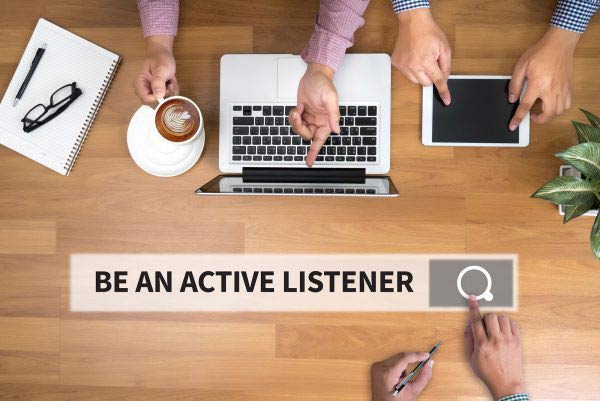
You already know that as a good leader, you need to invest your time in coaching your employees to succeed.
However, do you feel like you bring the energy and the motivation, but the results of the caching session are only subpar?
If that is the case, you need to reevaluate how you approach these coaching sessions and how you treat your employees.
One of the most important things to consider is whether you do all of the talking, or whether you do a fair share of active listening during in these sessions.
Making a small change can bring about significant results in your employees’ productivity and happiness at work.
Three Ways To Incorporate Active Listening Into Your Coaching Sessions
Ask Open Ended Questions
You can come to a coaching session with a game plan, explain your ideas and leave feeling confident that the meeting went well; however, how do you really know the attitudes, thoughts and goals of your employees unless you ask?
One effective strategy to implementing active listening on your end is to ask open questions.
This will help you have a much better idea of their impressions of the coaching. Instead of asking at the end of the meeting whether they understood everything, requiring them to only reply yes or no, practice asking the following questions instead:
Asking open-ended questions will encourage your employees to speak their mind, and will help you listen and understand what they need, and what they were able to take away from this meeting in order to move forward.
Try Not To Judge
One common barrier to active listening are the natural judgments that we make upon hearing another person speak.
As soon as a person starts speaking their mind, we form ideas and responses in our head based on previous experiences we have had with this person and in life in general.
However, these biases often prevent us from truly listening to the person, and having an individual experience with them.
For example, if a person may share with you that they feel overwhelmed with their workload, you may revert back to other experiences you have had with other workers, categorizing the person as lazy or unmotivated.
If you truly want to actively listen, you must try and remove judgments and give the person the benefit of the doubt when trying to express their thoughts.
Focus On Nonverbal Cues
This may be surprising to some, but listening does not only involve your ears.
Active listening requires you to focus on nonverbal cues, instead of simply what is being said.
In fact, research has proven time and time again that you can learn a lot more by focusing on the nonverbal cues rather than the verbal ones.
When you pay attention to a person’s gestures, tone, rate of speech, facial expressions and body language, you can read a lot more into what the person is trying to say.
Are they uncomfortable?
Are they nervous?
Are they tired?
Nonverbal cues will give you answers to all of this, helping you to tailor your coaching sessions to meet with your employees needs.

Written by Sean McPheat
CEO of MTD Training and Amazon bestselling author. Sean writes about leadership, business, and personal growth, drawing on 20+ years of experience helping over 9,000 companies improve performance.
Updated on: 26 September, 2017
Related Articles

Search For More 